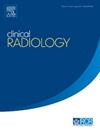不回头:在三级转诊中心对疑似马尾受压的紧急磁共振成像(MRI)进行的长期回顾性分析
IF 2.1
3区 医学
Q2 RADIOLOGY, NUCLEAR MEDICINE & MEDICAL IMAGING
引用次数: 0
摘要
AIMCauda equina综合征是一种罕见但潜在严重的疾病,诊断对最佳结果至关重要。磁共振成像(MRI)是首选的成像方式,但诊断途径具有挑战性,因为24/7紧急MRI的可用性主要限于三级中心。我们在一个这样的高等教育中心提供了13年的经验。材料和方法回顾性地从全信托信息技术(IT)系统中确定2011年至2023年间所有疑似马尾的腰椎mri。数据包括从请求到扫描采集的时间和报告时间,使用手动验证的自动化方法进行分析。结果在我们的机构,在过去的十年中,对MRI排除马尾压迫的需求增加了10倍。近年来,在大约90%的病例中,从请求到MRI采集的平均时间在4小时的国家目标之内,而从MRI采集到首次验证报告的时间达到1小时的国家目标的病例略多于一半(2023年为51.1%)。2023年,90.0%的报告在4小时内得到核实,77.5%的报告在2小时内得到核实,符合当地规定的标准。自2012年以来,377例临床怀疑为马尾综合征且MRI阳性的患者在一周内进行了脊柱手术。2012年至2023年的平均手术率为5.1%,与以往文献相符。结论:为了满足新的国家扫描采集和报告目标指南,对紧急MRI的需求不断增加,以排除马尾受压,这需要后勤和财政方面的考虑。本文章由计算机程序翻译,如有差异,请以英文原文为准。
No turning back: a long-term retrospective analysis of urgent magnetic resonance imaging (MRI) performed for suspected cauda equina compression in a tertiary referral centre
AIM
Cauda equina syndrome is a rare but potentially serious condition for which diagnosis is time-critical for the best outcomes. Magnetic resonance imaging (MRI) is the imaging modality of choice, but the diagnostic pathway is challenging as availability of 24/7 urgent MRI is mostly limited to tertiary centres. We present a 13-year experience at one such tertiary centre.
MATERIALS AND METHODS
All lumbar spine MRIs performed for suspected cauda equina between 2011 and 2023 were identified retrospectively from trust-wide information technology (IT) systems. Data including time from request to scan acquisition and reporting times were analysed using automated methods with manual validation.
RESULTS
At our institution, there has been a 10-fold increase in demand for MRI to exclude cauda equina compression over the last decade. In recent years, the mean duration from request to MRI acquisition was within the 4-hour national target in approximately 90% of cases, and time from MRI acquisition to first verified report met the 1-hour national target in just over half of cases (51.1% in 2023). In 2023, 90.0% of reports were verified within 4 hours and 77.5 % within 2 hours, satisfying locally defined standards.
Since 2012, 377 patients with clinical suspicion of cauda equina syndrome and positive MRI proceeded to spinal surgery within a week. The mean 5.1% operative rate between 2012 and 2023 corresponds well to previous literature.
CONCLUSION
There is a rising demand for urgent MRI to exclude cauda equina compression with consequent logistical and financial considerations required to meet new national guidance on scan acquisition and reporting targets.
求助全文
通过发布文献求助,成功后即可免费获取论文全文。
去求助
来源期刊

Clinical radiology
医学-核医学
CiteScore
4.70
自引率
3.80%
发文量
528
审稿时长
76 days
期刊介绍:
Clinical Radiology is published by Elsevier on behalf of The Royal College of Radiologists. Clinical Radiology is an International Journal bringing you original research, editorials and review articles on all aspects of diagnostic imaging, including:
• Computed tomography
• Magnetic resonance imaging
• Ultrasonography
• Digital radiology
• Interventional radiology
• Radiography
• Nuclear medicine
Papers on radiological protection, quality assurance, audit in radiology and matters relating to radiological training and education are also included. In addition, each issue contains correspondence, book reviews and notices of forthcoming events.
 求助内容:
求助内容: 应助结果提醒方式:
应助结果提醒方式:


